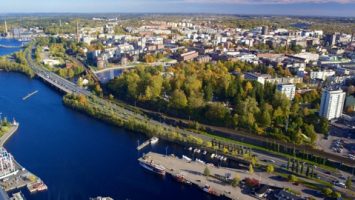
In March of 2017, the city of Dallas, Texas launched its Smart Cities Living Lab – four blocks featuring nine integrated smart cities projects. The Dallas Innovation Alliance (DIA) recently released its year-end case study on the Smart Cities Living Lab.
Some of the results reported include:
- a 13% increase in pedestrian traffic flow, with local businesses seeing a 12% increase in revenue, and a crime decrease of 6%. Information from pedestrian mapping aided local businesses in planning opening hours to capture the increased foot traffic;
- a 35% energy reduction from the smart lighting pilot; and,
- an average of over 440 people utilizing the interactive information kiosk every month, with 53% utilizing multiple functions, such as transit information, local points of interest, and public facilities.
“From the beginning of this initiative, the purpose of the Living Lab was to provide valuable insights through ‘test driving’ forward-thinking technologies that benefit the City of Dallas and its residents,” commented Jennifer Sanders, executive director, Dallas Innovation Alliance. “Through this case study, we are providing our first comprehensive look at the potential of smart city initiatives across our city, and hope to offer a resource that is of value to cities across the country who are embarking on their own smart city programs. We look forward to continuing to capture data in the Living Lab that brings results unique to Dallas’ needs, and are excited to expand our efforts in 2019 into Southern Dallas in Phase II.”
The next phase for the DIA will include projects in Southern Dallas focusing on mobility, digital divide, and public safety. In addition, the DIA is partnering with the Dallas Entrepreneur Center, AT&T, Cisco, Microsoft and UT-Dallas to launch a smart cities incubator – Innov8te – to support entrepreneurs and startups focused on solving civic challenges through emerging technologies and services.


